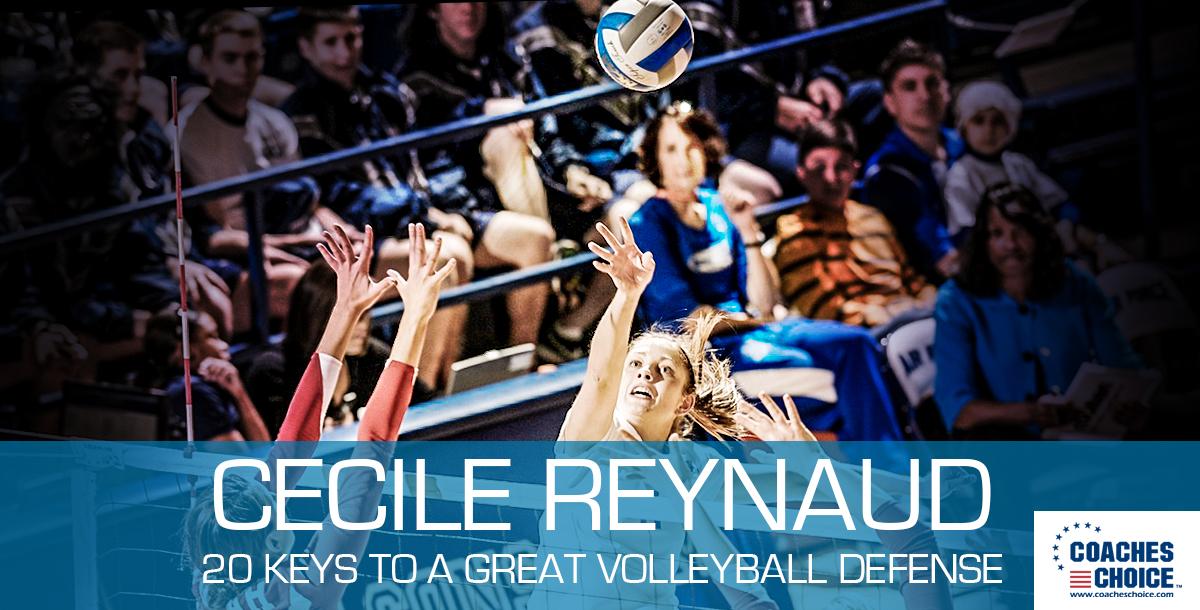Watch former Florida State Univ. head volleybal coach, Cecile Reynaud's full coaching course at this link:

About this Course

About this Course
Putting together a great defense for volleyball should always involve adhering to certain guiding principles. Featuring information and ideas from one of the most respected volleyball coaches in the game, 20 Keys to a Great Volleyball Defense details twenty insightful considerations concerning what steps can be undertaken to help ensure that a team has a fundamentally sound defense. The course is designed as a resource for volleyball coaches at all competitive levels.
Among the topics covered:
• Covering in three steps
• Stop on contact
• Expect the ball to come to you every time
• 120 degrees
• Always lead with your head
• Know the angles of pursuit
• Lean into the ball when you dig it
• High and hanging
• Forearm ball control
• Move in the same plane
• Know where the sidelines and endlines are
• See the ball underneath the block
• Protect your shoes
Among the topics covered:
• Covering in three steps
• Stop on contact
• Expect the ball to come to you every time
• 120 degrees
• Always lead with your head
• Know the angles of pursuit
• Lean into the ball when you dig it
• High and hanging
• Forearm ball control
• Move in the same plane
• Know where the sidelines and endlines are
• See the ball underneath the block
• Protect your shoes
• Penetrate the net low and tight
Coach Credentials
Dr. Cecile Reynaud is a well-known volleyball educator and a retired coach of the Florida State Lady Seminoles volleyball team. She is currently an associate professor with the sport management program at Florida State University. She also served as an interim assistant athletic director and senior women's administrator at Florida State University from 1994-95. She has served as a television color analyst for collegiate volleyball matches on Fox Sports Net South, Sunshine Network and ESPN.
Reynaud compiled an impressive 635-325-1 (.660) record at Florida State, which places her in an elite group of only eight active coaches with 600 wins. She was also a past elected president of the American Volleyball Coaches Association. Reynaud ranks 11th nationally in career victories among active Division I coaches.
A 1975 graduate of Southwest Missouri State University. Reynaud enjoyed an outstanding athletic career on the volleyball team and was twice named among the Outstanding College Athletes in America. In 1983, she was inducted into the school's Women's Athletics Hall of Fame. Reynaud added "Dr." to her name in the spring of 1998 after completing her doctorate degree in athletic administration at Florida State.
Reynaud compiled an impressive 635-325-1 (.660) record at Florida State, which places her in an elite group of only eight active coaches with 600 wins. She was also a past elected president of the American Volleyball Coaches Association. Reynaud ranks 11th nationally in career victories among active Division I coaches.
A 1975 graduate of Southwest Missouri State University. Reynaud enjoyed an outstanding athletic career on the volleyball team and was twice named among the Outstanding College Athletes in America. In 1983, she was inducted into the school's Women's Athletics Hall of Fame. Reynaud added "Dr." to her name in the spring of 1998 after completing her doctorate degree in athletic administration at Florida State.


